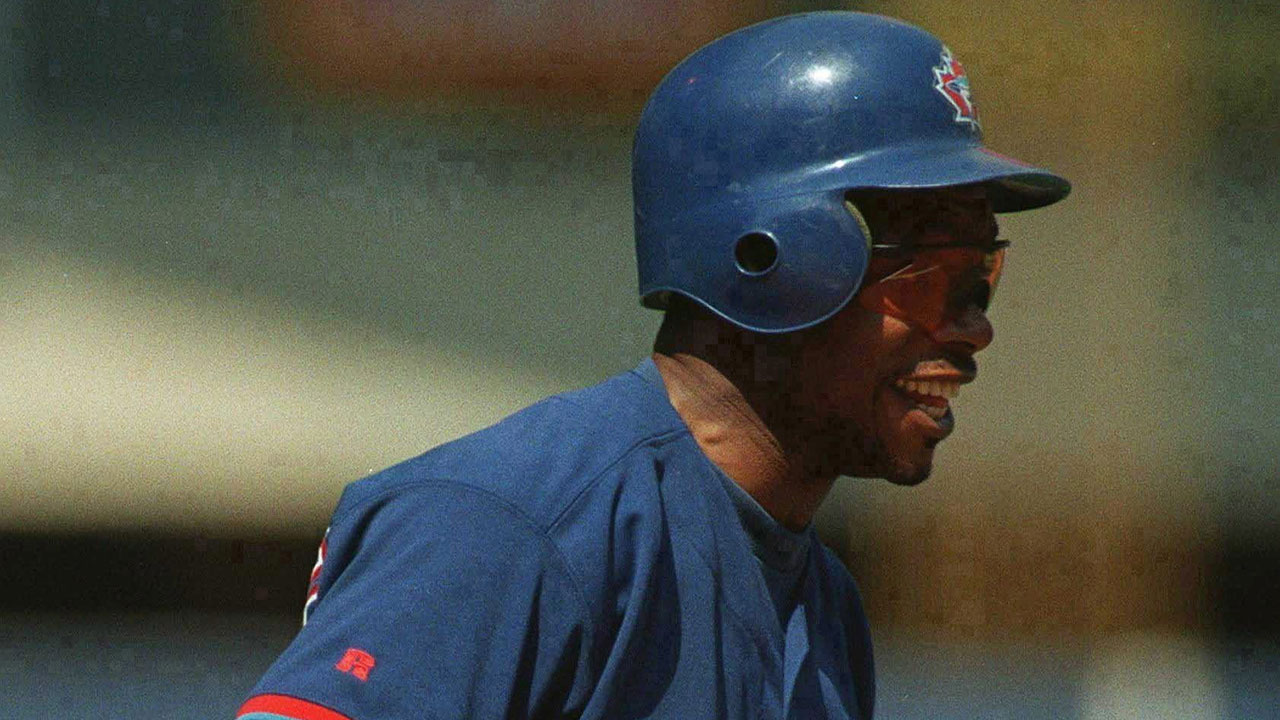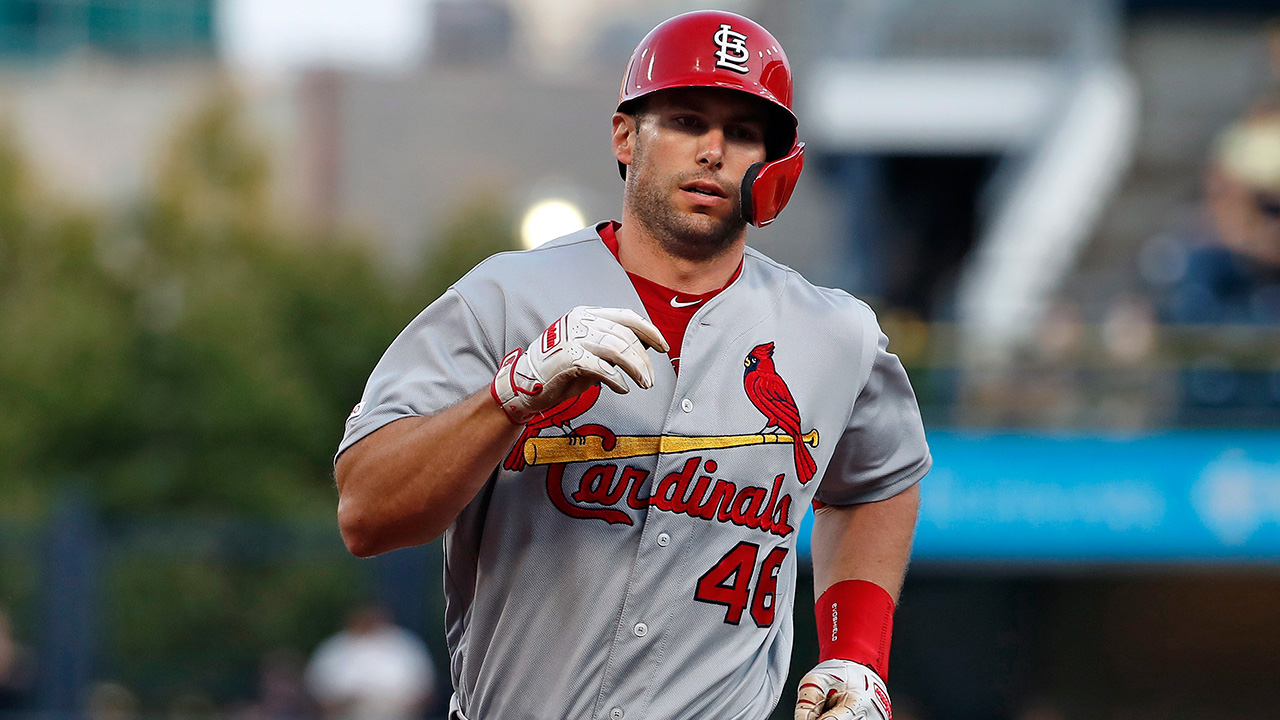Too many players in too many games pass too early and in the sportswriting dodge you can grow too used to writing remembrances that tell too little about the athletes mourned. With that said, the news from the Blue Jays of the death of Tony Fernandez hits me far harder than most. His battle with kidney disease was a matter of public knowledge — he had been on dialysis for years and made public the fact that he was waiting for a kidney transplant.
Though he was 57 when he died in Florida, he’ll always be 23 to me.
I first met Tony Fernandez in November of ’85 when he was fresh off playing his first full season with the Blue Jays, barely a month removed from Toronto falling one game short of advancing to the World Series. He had looked like a potential all-time great in that year, hitting .289 and with some impressive pop (31 doubles and 10 triples) for a shortstop. Though George Bell and Jesse Barfield had finished ahead of him in the voting, at least one baseball publication suggested that Fernandez had been the Jays’ most valuable in their run to their first division title and already ranked him ahead of Cal Ripken Jr. as the American League’s No. 1 shortstop.
Beyond easy statistical measure, he had a preternatural or almost magical aspect, stealing hits from balls sent deep in the hole, whipping a sidearm throw across the infield to first base while he was falling toward the third-base foul line. He would have been an easy call for American League Rookie of the Year that season but he had logged too many games as a call-up and caddy for Alfredo Griffin the two previous seasons to qualify for the award. Another shortstop, Ozzie Guillen with the Chicago White Sox, won the balloting and no one would have thought about trading Fernandez straight up for him. In fact, no one would have thought of trading him no matter what the yield. Fernandez looked like the cornerstone for a franchise on the rise.
You didn’t have to be a Blue Jays fan to believe that he should have won the Gold Glove in 1985, but voting might have been skewed to favour more established players. No matter. Fernandez would soon enough be winning four in a row. Talk about Fernandez’s potential didn’t stop at predictions of becoming an all-star. Epy Guerrero, the Jays’ famous scout in the Dominican Republic, told me: “One day they will say that Tony Fernandez is the greatest of all Dominican ballplayers. No doubt he has the heart to play, the head to learn. He’s the best shortstop in baseball but he’s still learning, still improving, still working harder.”
Though he had logged a heavy load of games that spring, summer and fall, 161 in the regular season, seven more against Kansas City in the ALCS, he was playing every day for los Tigres del Licey, a Dominican winter-league team that featured major leaguers right through the lineup and coming off the bench. Fernandez could have used time off, rest and rehab, but he felt a sense of loyalty, if not an obligation, to the team that gave him, at age 19, a chance to play against heroes he had grown up following and imitating if not worshipping.
If you hadn’t seen him with the big club that season or known his name going in, you likely wouldn’t have made him for a ballplayer or an athlete at all. He was almost painfully skinny and more than a little knock-kneed. I can’t vouch for his hat size but the source of his nickname in the D.R., Cabeza, literally Head, would have been obvious at a glance.
Going in, I knew that Fernandez was a deeply religious young man and on first impression he seemed almost too serious and focused on the game to have had much fun playing it. He also seemed utterly unimpressed with himself. When I asked him about his goals and career ambitions, he said simply: “To be a ballplayer. I am a player, that is all. I’m still learning the game, learning the fields [in the American League]. You ask about talent [to play] but it’s God’s talent not mine.”
We talked in the dressing room after a game against Licey’s rival Escogido, another squad crowded with major-league talent. After I introduced myself, he didn’t beg off and took me off to the side away from the hubbub in the dressing room at Estadio Quisqueya.
We settled into a routine — I asked questions in my pidgin Spanish and he’d answer them in English as best he could. We talked about how, as a ballplayer in his teen years growing up in San Pedro de Macoris, he was mostly overlooked by major-league scouts. And in the early ‘80s, the Dominican Republic was as intensely scouted as it is today — it almost seemed that if a prospect wasn’t signed by the Dodgers or the Jays, he wasn’t likely to be signed by anyone at all.
Fernandez said he almost certainly wouldn’t have any shot at playing pro ball if it hadn’t been for Guerrero, the legendary talent hunter and fast friend of Toronto general manager Pat Gillick. Guerrero had taken a chance on Fernandez at 16 even though he needed knee surgery, the removal of bone chips, which would have scared off anyone else with even a passing interest in him as a prospect. It was a debt that Fernandez said could never be fully repaid. It gave him a shot at a life he couldn’t have imagined growing up in San Pedro. When he said it was a godsend, he said this in an entirely literal sense of the word.
It was compelling stuff, enough to move the hardest heart, to be sure.

Fernandez was a singular talent but he was also part of a wave — not just a wave of Dominican players having a huge impact on the game but further a wave of shortstops coming out of San Pedro de Macoris, a hard-scrabble city of about 100,000, a short drive east of Santo Domingo. It beggars belief, but in the late 1980s the everyday shortstops of six major-league teams grew up within a few blocks of each other in San Pedro. Fernandez would tell you that he wasn’t the most physically talented of them and he would be saying that out of false or exaggerated modesty. No matter, the other five would tell you he was the best and really, though still a young player, the island nation’s most promising ballplayer.
Guerrero told me that no one ever worked harder than Fernandez did, on the diamond from dawn to darkness at the Blue Jays’ training complex, living on site. Almost without a doubt he had spent more time on the diamond than any teenage ballplayer in the world. Malcolm Gladwell’s theory suggests it’s possible to achieve genius through 10,000 hours of work. No doubt Fernandez had logged that time two or three times over.
After that first meeting at Estadio Quisqueya, I left the ballpark late at night and stood on the street looking to hail a taxi. I was enough of a neophyte and optimist to have presumed that would be easily done, but that was far from how it played out. No taxis passed by for half an hour, probably no more than a dozen cars in all. I had no idea how to get back to my hotel and crisis loomed.
At that point, an old wreck with a perforated muffler pulled up in front of me and when I was about to ask a total stranger for a ride — I don’t recommend it anywhere but certainly not in Santo Domingo after midnight — I realized that the car was being driven by Fernandez. He offered me a ride back to the hotel and maybe saved my life. The idea of a pro athlete offering kindness to a stranger is not without precedent but still he revealed himself through deed and not just prayerful word.
And on the ride he talked a little more openly about what weighed on his mind —his mother was ill, terminally as it turned out, with kidney and liver disease. She would die less than three months later. “I am playing in Toronto but my head and my heart are somewhere else,” he said. His siblings had assured him that while he was in Toronto they would make sure that she went to the doctor regularly and received treatment, but she refused. She died just weeks after we talked.
@JesseBarfield29 and Tony Fernandez have always had a close and beautiful relationship! Our prayers are with you & we love you!! pic.twitter.com/f5uF6FS77i
— Marla Barfield (@MBarfielddesign) February 1, 2020
Later that winter, I rented a car and was driving through San Pedro to get a sense of the greenhouse that grew shortstops. I pulled over in the morning outside the ballpark where the hometown team played, las Estrellas de Orientales, the Eastern Stars whose logo was a bat-wielding green elephant.
A couple of dozen kids, some as young as 10, some barefoot, had broken into a couple of games — the best of the players took their position out at shortstop and they did passable impersonations of Fernandez and their local heroes and it was easy to envision a younger version of Fernandez out there among them. In fact Alfredo Griffin, the shortstop that Fernandez would eventually replace, remembered him playing ball on the dirt diamonds and sneaking into the stadium with a bunch of friends not to watch games but rather in the off-hours to play on the perfectly groomed field until the Estrellas chased them off. “He had this old glove and he played in his bare feet,” Griffin said.
I drove away — did a few interviews, had lunch, took in the sights and started to drive back to Santo Domingo, but before I got onto the highway I stopped in a corner store to get some potable water. I asked the storekeeper if he by chance knew where Tony Fernandez’s home was. I thought he might point me in the direction of the nearest beach or something along those lines — even the major-league minimum would represent a king’s ransom in the Domenican.
Instead, the storekeeper gave me directions back to the ballpark — the home where Fernandez grew up was about a bloop single away from las Estrellas’ stadium. The home was on an unpaved street that was ankle-deep mud after an overnight rain. Like the man, the home was painfully modest, all poured concrete, slatted blinds instead of glass in the window frames.
I knocked on the door and Fernandez’s sister answered — anyone could have picked her out, she could have been his twin — and she showed me in. Their home was immaculate but spartan. It had electricity but no creature comforts. Decorations were framed images of Jesus but not a lot more, certainly nothing of the famous son and brother playing baseball. What Tony Fernandez had said about favours sent by God, she said line for line, chapter and verse.
When I headed back to the highway, I passed the stadium once more. Games were not only still going on as the sun was setting, but the lineups were unchanged from the morning’s — the same kids were out there. Again, it was easy to imagine a young Fernandez among them, baseball being not something measured by games or even hours but days. If Fernandez had been a hard worker by Dominican baseball standards, he might have logged 10,000 hours of work on his game before he even signed with Guerrero.

Toronto Blue Jays‘ Jose Cruz (23) gets congratulations from teammate Tony Fernandez after the Jays beat the Philadelphia Phillies 2-1 in 11 innings Thursday, July 12, 2001 in Philadelphia. Cruz drove in the Jays’ first run and scored the winning run in the top of the 11th inning. (Miles Kennedy/AP)[/caption]
As a major leaguer, Fernandez is viewed by many as a near-tragic case. All that promise was compromised by injury. The first and most poorly timed one was an elbow injury suffered when Detroit’s Bill Madlock took the shortstop out with a vicious slide in the heat of the 1987 pennant race — Fernandez was on the sidelines, his elbow wired together and under a cast running from wrist to armpit in Detroit when his teammates lost the final game and with it the pennant to the Tigers.
The worst injury of all: in ’89, Texas’s hard-throwing right-hander Cecilio Guante lost a slider high and inside that fractured the bone above Fernandez’s right eye in three places. In other circumstances it might have been thought to be a brushback or intentional beaning, but Guante, a fellow Dominican, was a friend of Fernandez and seemed stricken when he saw him laying in the batter’s box. No recriminations followed, no retaliation. “It was an accident, no doubt,” Fernandez said. Still, he worried that he was going to lose sight in his eye. “[It felt] like a piece of my face is missing,” he said.
One school of thought holds that Fernandez was never the same player after the beaning, at least at the plate, and that might have been the case. Maybe the numbers would show a decline but he wasn’t chased from the game.
You would have thought that he would have been a Blue Jay for life but instead was sent to San Diego with Fred McGriff in the trade that brought Robbie Alomar and Joe Carter to Toronto. Fernandez came back to Toronto and got a ring with the Jays in ’93 — he mounted a pretty strong case for World Series MVP that fall, with a .333 batting average, a .423 OBP and nine runs driven in across six games against the Phillies, including five in the epic 15-14 victory in Game 4.
He came painfully close to getting another with Cleveland in 1997. In the ALCS, his homer in the 11th inning was the only run scored in the pennant-clinching Game 6 victory over Baltimore — in fact, it was his second hit of the game and his teammates managed only one other in the pressure-filled crucible.
Then in Game 7 of the World Series in Miami, he staked the Indians to a lead with a two-run single, but in the bottom of the 11th, with Fernandez playing second base, a routine ground ball hit by Craig Counsell rolled under his glove and led to a two-out championship-winning hit by Edgar Renteria. Fernandez said: “I don’t want to make any excuses,” a disconsolate Fernandez said in the clubhouse after the game. “It was a play I should have made. A play that any infielder would have made. Everything else will be forgotten. I’m glad I contributed. I gave my best, gave a great effort, but unfortunately it didn’t work out for me. I don’t think people will remember anything else.” That moment might have haunted him but what should be remembered more about Fernandez that season is that he was coming back after missing all of 1996 after elbow surgery and had moved over to second base on a regular basis for the first time in his career. And what should be remembered more about Fernandez in that post-season is that he had been a tigre in October — in that ’97 series against the Marlins he had eight hits in 17 at bats. That was a piece with his career: In 43 total playoff games with the Jays, Yankees and Indians, he hit .317.
Some younger Jays fans might have never seen him, but for highlights. Some might have only seen him with the Jays when he landed in Toronto in his late 30s on what was a bittersweet farewell tour. For those in need of a summary, let me say he wasn’t so easy to quantify by statistics, classic or advanced. In sum: He was a great young player, a very good one for a good long stretch, an All-Star in his best years, but alas not quite up to the standards of Cooperstown, not with the value it places on longevity rather than peak performance.
I don’t see anything sad in his career, really. I see transcendence. A talent grown in the dirt streets in San Pedro de Macoris, a young man through dint of his labours and with faith as his rock, made it to the big leagues, later worked in the game as an executive and was able to bring his family to the U.S. to circumstances far more comfortable than San Pedro.
There’s nothing tragic in that at all, just in him being taken too soon at the age of 57.








